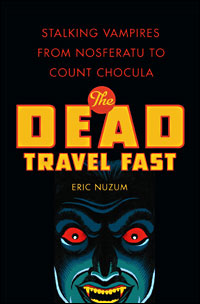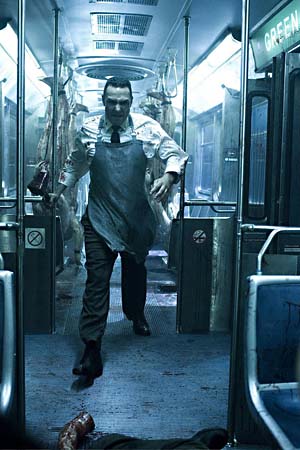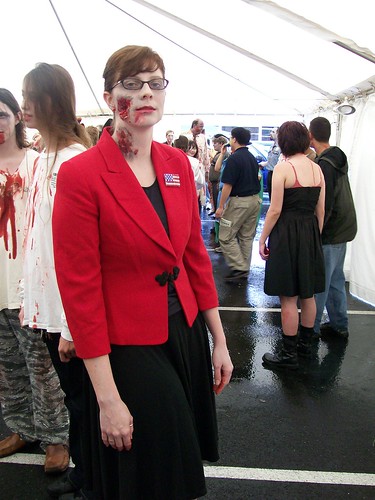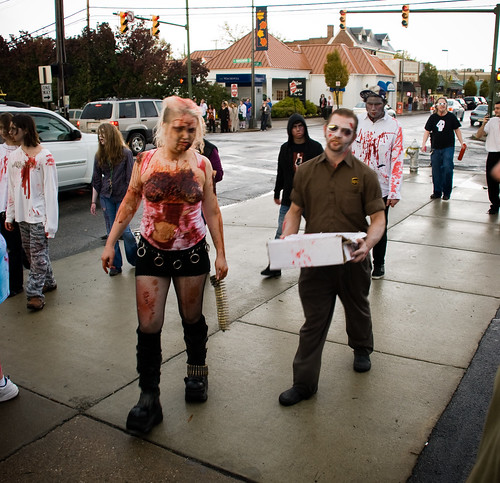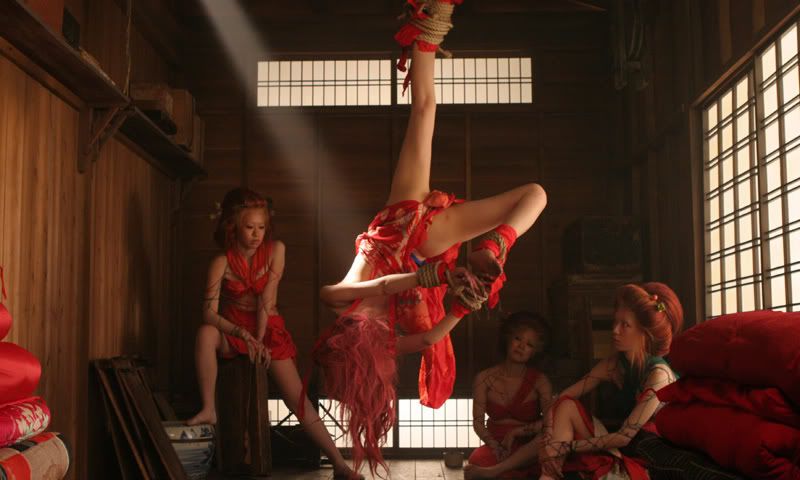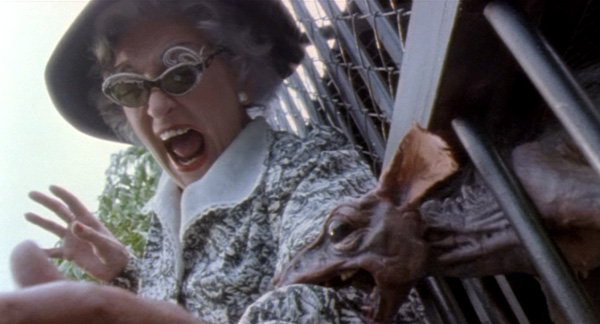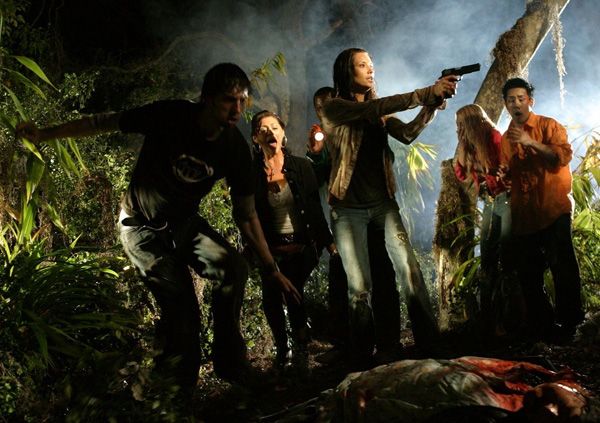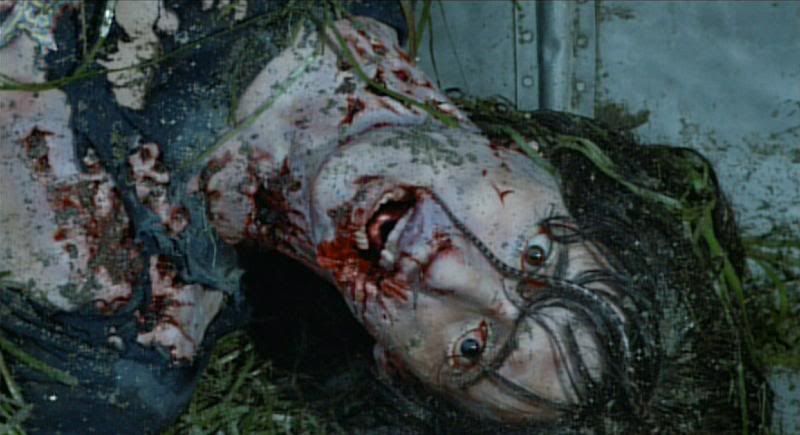
True Blood is currently airing on HBO on Sundays at nine.
Twilight is the first in a book series by Stephanie Meyers, and is now a movie starring Kristen Stewart and Robert Pattinson.
True Blood is what Twilight should have been. As I type this, I can hear the rattle of sabers as an army of thirteen year olds gathers at my door, but it is the truth. Really, the show is just a sexier interpretation of the books, with a dash of "Heroes" for good measure, set somewhere that isn't so horrendously rainy. This doesn't mean True Blood doesn't have its flaws, or Twilight its strengths, but True Blood is better if one is looking for horror.
I've read all of Twilight, New Moon and Eclipse, but only about a third of Breaking Dawn, as it was simply too ridiculous to allow me to continue. I can really see why all the Twi-Hards (this, or sometimes Twi-Nerd, is the proper term for Twilight fans) were so upset after its release. Though I only spent a few days on the series as a whole, I felt cheated. I can only imagine how everyone else felt.

There is simply too much to expound upon here in regards to the series. Beyond bad writing, or obsessive description devoted to Edward's beauty, intelligence and gentle disposition, Bella's character is obnoxiously weak. I wanted to scream at her. When Edward leaves for what he sees as Bella's own good, she basically goes catatonic for four months, as she can not function without him. Though she is a good student, she gives up on college for she no longer sees a reason for it now that she has found her "true love."
She is unable to defend herself, is manipulative and so emotionally immature one wonders how Edward, in his advanced age, can manage to hold a conversation with her. In what I think was a bid to make her character "lovably flawed," she is clumsy to the point of handicap, and basically must be rescued from herself every few pages. She does not even have a good nature to redeem herself, but is shrill and overly-opinionated in what I think was Meyer's failed attempt to make her a "strong female character." She is, unequivocally, a bad example for all those thirteen year old girls who love her, especially in concerns to romance. Everything is simply presented to her, and Bella and Edward's problems mostly stem from loving each other too much. It sets up unrealistic expectations.
On a more horrific note, Meyer's vampires are anything but. They possess every power, but every weakness of their kind has been eradicated. They can not walk in the direct sunlight not because they will burn, but because they will sparkle and thereby attract undue attention. They do not feed on humans, and seem more like good faries than creatures of the dark.
However, there are moments of danger and appeal. In Eclipse, which I think was actually acceptable as a novel, Edward rips a fellow vampire's head clean off her shoulders and it rolls to Bella's feet. These kind of moments, though few and far between, highlight the true essence of a vampire. That is exactly what NEEDS to be seen in the series, but are most often censored out.

This brings me back to True Blood. I have only watched the first four episodes, as I do not own a television, but I feel the basics of the series are already apparent. Violence pervades every scene of this show, and not only from the vampires.
Sookie, the main character, saves Bill the vampire from a couple attempting to steal his blood in order to sell it as a drug. Though she looks just like Hayden Panettiere from Heroes, she defies her tiny, blonde appearance and attacks the man with a chain. She sucessfully rescues Bill, but is later ambused by the couple, who throw her to the ground and kick her in the ribs until blood pours from her mouth.
As one can see, the makers of True Blood do not shy from violence, but I also enjoy that this violence is not soley the domain of the vampires. It certainly makes for a much more complex set of morals than the normal "humans good/vampires bad" party line.
I could go on about this, but I'm running out of room. Basically, True Blood simply has what Twilight lacks: violence, sex and above all, heart.
Twilight, the book: C-
New Moon: D
Eclipse: B
Breaking Dawn: F
Twilight Movie: B
True Blood: A
 Let The Right One In, or Låt den rätte komma in, was directed by Thomas Alfredson, and stars Kåre Hedebrant and Lina Leandersson. It was filmed in Sweden, and can now be seen in theatres with English subtitles. It is based on a book by the same name, by John Ajvide Lindqvist. There is currently an American remake in production.
Let The Right One In, or Låt den rätte komma in, was directed by Thomas Alfredson, and stars Kåre Hedebrant and Lina Leandersson. It was filmed in Sweden, and can now be seen in theatres with English subtitles. It is based on a book by the same name, by John Ajvide Lindqvist. There is currently an American remake in production.  The treatment of Eli's character is really what makes the movie unique. She is not Anne Rice's Claudia, a spoiled and cunning woman in miniature, but a child. Her every movement is imbued with vulnerability, and the need to be accepted. When Oskar buys her some chocolates from a shop, she eats one, though she throws up moments later, because she so wants to be his friend. Eli is innocent, a word almost never used to describe a vampire. Her stomach rumbles with hunger before she goes out to feed, and she kills not out of blood lust but out of necessity.
The treatment of Eli's character is really what makes the movie unique. She is not Anne Rice's Claudia, a spoiled and cunning woman in miniature, but a child. Her every movement is imbued with vulnerability, and the need to be accepted. When Oskar buys her some chocolates from a shop, she eats one, though she throws up moments later, because she so wants to be his friend. Eli is innocent, a word almost never used to describe a vampire. Her stomach rumbles with hunger before she goes out to feed, and she kills not out of blood lust but out of necessity.